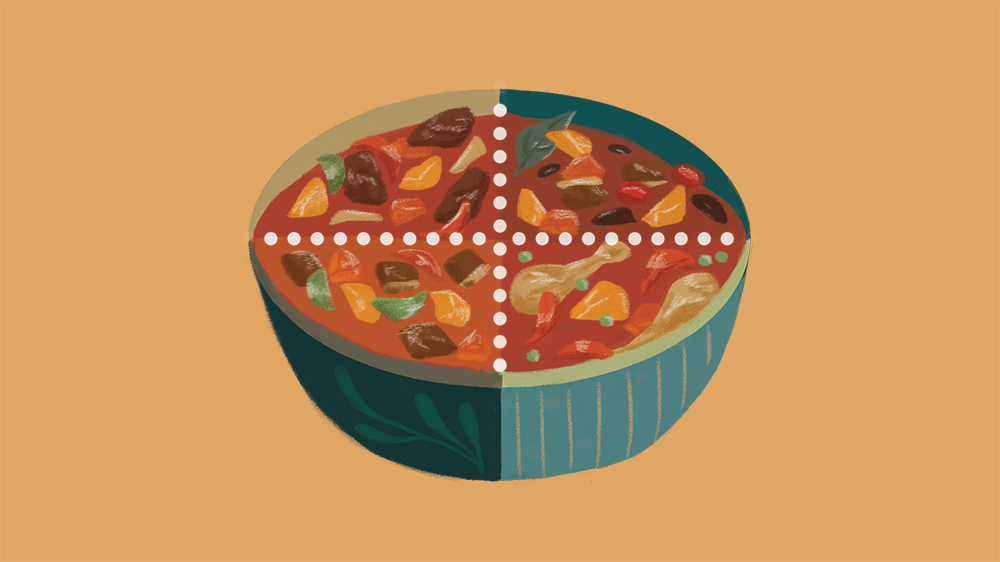They’re all red, made up of meats, and simmered to perfect tenderness; how do you distinguish caldereta from mechado, menudo from afritada?
These dishes are ever-present on the Filipino dinner table. They’ve been enjoyed for lunch, dinner, and even breakfast, ever since the Spanish came and taught how they’re made. They’re ubiquitous during celebrations and parties–baptisms, weddings, and even death anniversaries. They’re also available everywhere, from the corner carinderia to high-end restaurants. But how come many Filipinos still get confused when identifying these tomato-based dishes?
Truth be told, it has something to do with how everything is done in a rush these days. People want quick, fast results, and this applies to food as well. It might also be a product of people’s laziness, putting together whatever ingredient is available in the pantry and relying on ready-made mixes. Reverence to tradition is simply forgotten along the way.
So, we take a step back and dissect each of these Filipino dishes, differentiating each by which meat is used, how the sauce is made, and what vegetables and other accoutrements are added. You’re welcome!
Caldereta
Caldereta is a celebratory dish. Christmas and birthday parties are never without it. Its name comes from the Spanish word caldera, which means cauldron, or the pot where the dish is cooked. It’s usually salty and spicy, and features a thick, deep red sauce. Some claim that caldereta is a general term for stews, so mechado is actually a type of caldereta. Got even more confused?
Meat: Beef with bones or goat
Sauce: Tomato sauce, liver spread, bird’s eye chilies
Embellishments: Carrots, potatoes, bell peppers, olives, cheese sometimes
Mechado
Its name suggests how this dish is different from other tomato-based dishes. It’s taken from the Spanish word mechar, meaning to put oil or lard, which suggests how the traditional mechado is made. Beef steaks are rolled and lardon or pork fat is placed at the center. The lardon is a welcome addition because fat is flavor, of course.
Meat: Beef or pork, fat lardon
Sauce: Tomato sauce, soy sauce, acid such as vinegar or citrus
Embellishments: Carrots, potatoes
Menudo
Menudo is actually a Spanish word, which means small. Thus, all the ingredients of menudo are cut or diced into small bite-sized pieces, making it easier to consume. No knives needed. It’s usually made with raisins that make the sauce sweeter than usual. A spin-off is the more budget-friendly menudillo, which uses ground pork as its main ingredient.
Meat: Diced pork, liver sometimes
Sauce: Tomato sauce
Embellishments: Potatoes, raisins, hotdogs, quail eggs sometimes
Afritada
An everyday dish, afritada is traditionally made with chicken. It’s slightly saltier than the rest and often thicker, with the occasional addition of breadcrumbs to the sauce. Its name is taken from the Spanish word fritada, which translates to fry and suggests how the dish is cooked. The meats and some of the vegetables are fried first before being simmered into a stew.
Meat: Chicken
Sauce: Tomato sauce, breadcrumbs sometimes
Embellishments: Carrots, potatoes, bell pepper, green peas sometimes
Writer: IDGE MENDIOLA
ART CLARISSE ALFONSO




